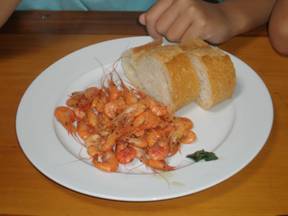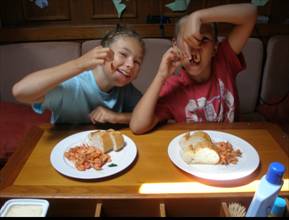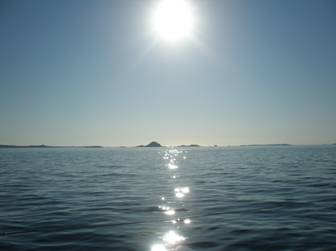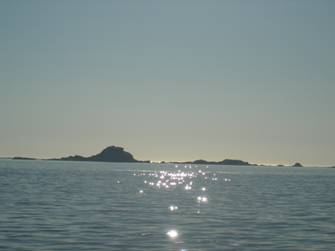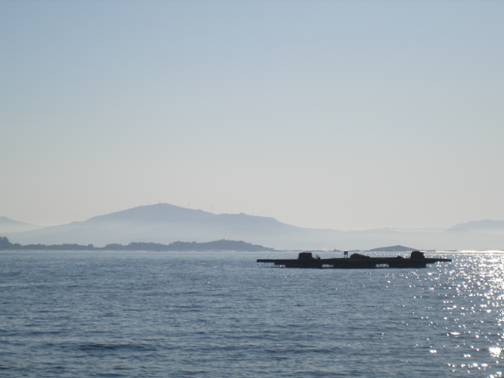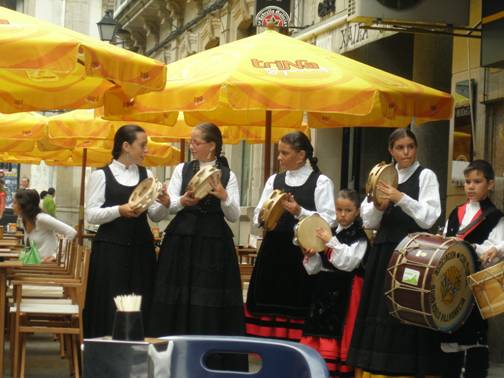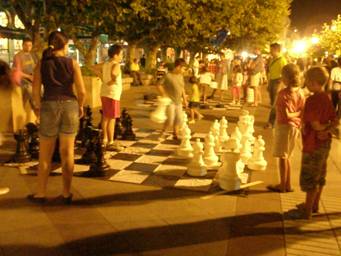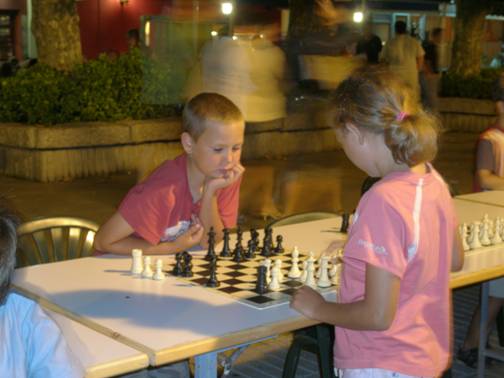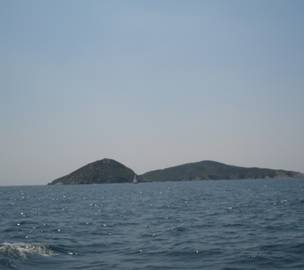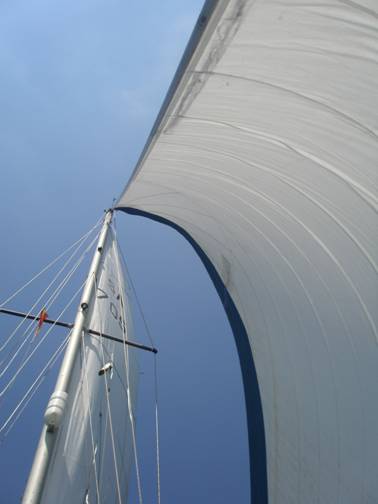Heading south at high speed (81 miles in 4 days!)

|
Portosin In Portosin, David and Lawrence spent a whole day down the engine hole, swearing and banging, before finally emerging grinning and covered in black stuff. This, apparently, was the result of giving the engine a good servicing! The new alternator turned up the next day and was duly fitted – so we can now top up the batteries when the engine is running. The children caught a bucketful of shrimps (plus some slimy green stuff) using a net off the pontoon and insisted on having them for lunch. While the green stuff was probably sea lettuce and Hugh (Fearnley-Whittingstall) says you can eat it, I didn’t insist as I wasn’t absolutely sure…
Shrimps for lunch (with green stuff on the side). Ria de Arousa – and a 1000 miles under our
belt From Portosin we motored over a sea of glass the 33 miles to the next Ria to the south (the Ria de Arousa) before anchoring off Pobra do Caramiñal for the night. While writing up the log, we realized that we had done our first 1000 miles of the trip and 1016 miles since leaving Aberystwyth!
Motoring on a sea of sparkling glass.
Pobra do Caramiñal. All of the Rias are major shellfish producing areas (the Spanish claim that Galicia is now the biggest shellfish producing area in the world!), but the Ria de Arousa in particular is jam packed with viveros (mussel rafts), roughly 20 metres by 15 metres, often grouped together a hundred at a time (you can get an idea of the scale of these farms from the satellite images on Google Earth). The rafts are anchored and the mussels grow on ropes hanging down into the water. While there is room for us to go between the rafts, they are not lit at night so there is no moving around the Rias in the dark!
Arty shot of a mussel raft and misty mountains. Vilagarcia We had post to collect at the marina at Vilagarcia, but when we got there, the marineros (marina staff who allocate berths and help you to tie up) were guarding the entrance in a RIB, armed with a clipboard, turning boats away if you weren’t on the list (supposedly because there was no room). Luckily we managed to sneak onto a spare pontoon “for just 5 minutes to collect our mail” and get to the office. Carmen (the marina administrator at Marina A Coruña) had notified Sylvia (the administrator at Marina Vilagarcia) that we would be turning up at some point and she managed to squeeze us in, and take our money before telling the marineros they had to find us a berth for a couple of nights. Once safely installed in the marina we went to explore the town and found a major Galician cultural festival and motorbike rally in full swing, with street games, a fair, food stalls, street concerts and an open air disco going on well into the early hours of both Saturday and Sunday morning (the disco didn’t start until 1 am).
Galician Girl 1 to Galician Girl 2: “Does my bum look big in this?”
The bright lights of Vilagarcia.
No Health & Safety here – bumping is encouraged!
Giant pavement chess, draughts, ludo and four-in-a-row kept the kids out of mischief.
Midnight chess on a smaller scale. Passage to Bayona While (according to the pilot book) the Ria de Arousa is considered to be one of the most beautiful of the Galician Rias, we found it to be quite busy and commercialized – we preferred the quieter, sleepier Rias further north. Having had enough of the bright lights of Vilagarcia, we pointed CAPE’s pointy end south once again, and headed for Bayona (Baiona in Spanish) on the outer edge of the Ria de Vigo and the last major marina with access to a decent chandlers before Portugal (now only 30 miles away). Sunday is race day, and on leaving the Ria for the open sea we had to dodge a huge fleet of Kevlar-powered yachts racing towards us.
Yachts doing tippy stuff and heading straight for us – at high speed. We passed some rugged islands on the way to Baiona. The islands are sparsely populated and designated marine reserves, sea bird sanctuaries, and popular with day trippers and naturists. One of the beaches on the Islas Cíes was voted number 1 of the world’s best beaches by The Guardian Weekly.
We would have liked to anchor for the night off one of the beaches on the Islas Cíes to swim and explore, but the wind got up to 25–30 knots, and as we couldn’t find a sheltered spot in which to anchor, we pushed on doing 7 knots under genoa alone to the shelter of the Ensenada de Baiona. Baiona
Safely installed in the Ensenada de Baiona, and recovering from gusts of wind up to 30 knots with a tad too much sail up for my liking! The
RYA Yachtmaster exam question: There are 2 sails hidden in this picture. Can you find them? |
